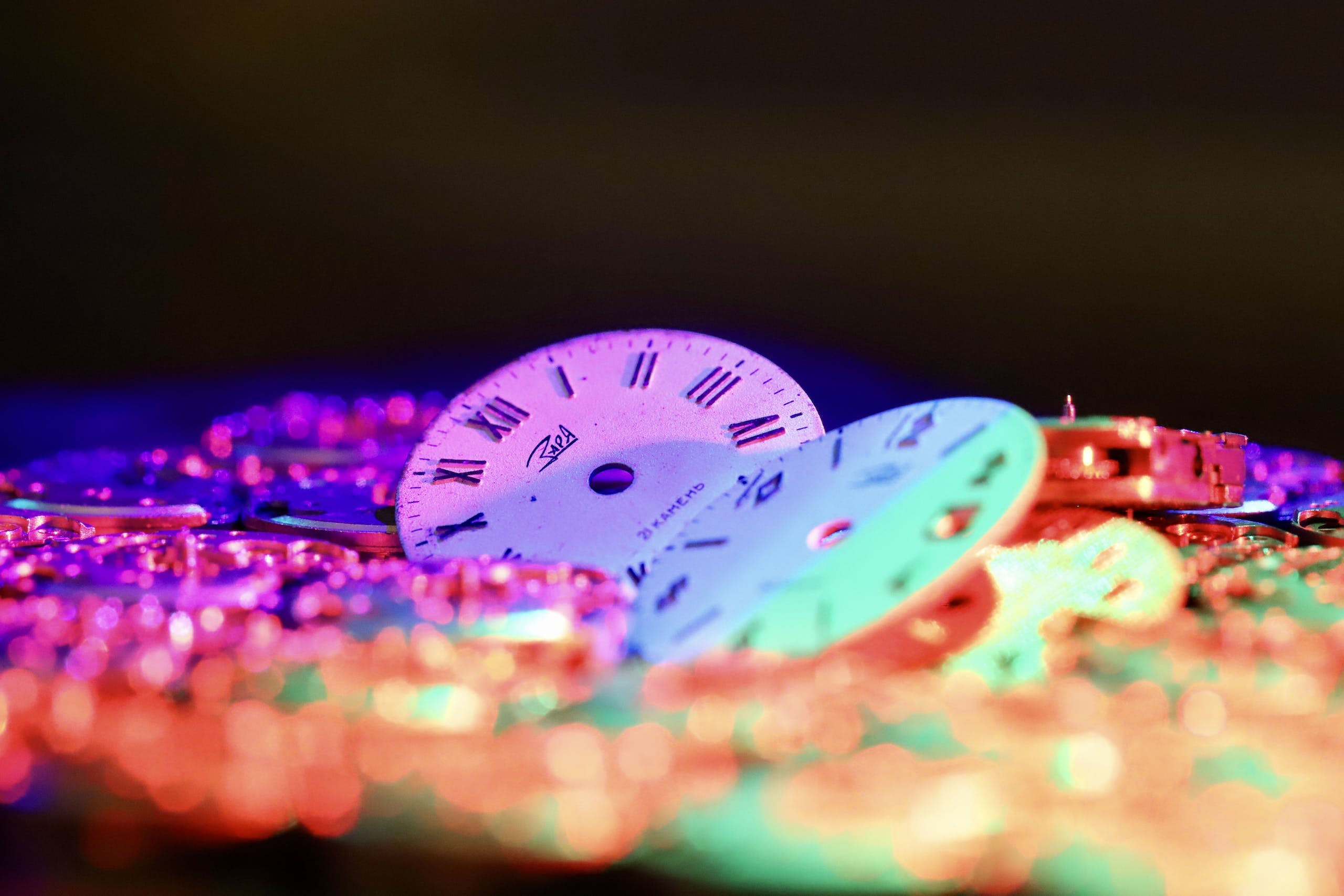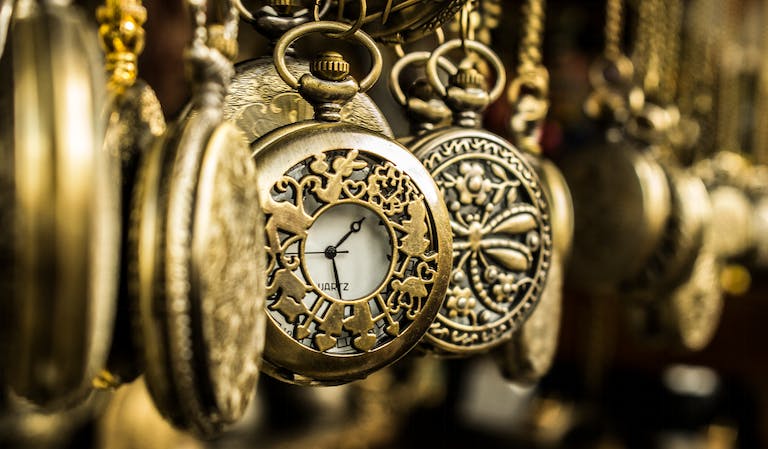Watch movement: Quartz movement vs mechanical movement
A watch movement, also known as a caliber, is the inner mechanism of a watch that makes it function.
A better way to understand it is to think about what a heart is to a human body. Similar to how blood pumps through the veins, energy actively transports from one piece to another, propelling the hand around the face of the caliber.
The movement, which comprises several components controlling the timing, comes in varieties. So that’s why every watch can have its unique mechanism and movement.
To find a watch that aligns with your preferences and needs, you must know the difference between the various movements. Understanding these movements empowers beginners, collectors, and watch enthusiasts to make informed decisions when purchasing a watch.
Example: Quartz movements are more precise and affordable, while mechanical movements showcase craftsmanship and horological artistry.
Also, understanding movements enables proper maintenance and care, ensuring longevity and performance. For example:
Battery replacement for quartz movement or periodic servicing for mechanical movement.
In the world of horology, watch movements are the heart that defines the essence of timepieces. Every heart can be different and have its movement but we can identify two principal categories:
- Quartz movements;
- Mechanical movements. (which can also be automatic or manual)
Let’s start to analyze the quartz movements, which are the most popular and used for various reasons. But first, what are quartz watches?
1. Watch movements: Quartz
Quartz watches utilize a quartz movement, relying on an electronic oscillator or battery to send an electrical current through a small quartz crystal. This electrifies the crystal, generating vibrations that drive the gears, enabling the watch hands to move around the clock face.
The discovery of electricity, the invention of the battery, and the advent of solid-state digital electronics. Which utilize semiconductor devices like transistors, diodes, and integrated circuits found in most computers today. This has enabled the emergence of this modern and revolutionary type of movement, which only began to appear relatively recently.
After all these inventions we can appreciate, and make, quartz watches. Although we are talking about a modern type of watch, even if we discussed the discovery of electricity. Watches and timekeeping in general are ancient inventions.
The history of horology is a fascinating argument but it’s not the time to talk about that. So, let’s see in detail how quartz movement works.
1.1 How does quartz watch movement work?
The key part of this movement is the quartz crystal. A specific compound called silicon dioxide, is a piezoelectric material. When quartz oscillates, it maintains outstanding resilience to temperature, unaffected by external conditions.
Being neutral from external conditions is a good quality for a watch. This is because watches are usually very sensitive to water, temperature, shocks, and magnets.
Quartz, as a piezoelectric material, accumulates and generates an electric charge on its surface when compressed or bent.
Then, when the battery produces a current in the watch circuit, of which the quartz crystal is a part. This causes the quartz to vibrate at a precise time a second. (32.768 times)
After that, the circuit turns each 32.768 vibrations into one electric pulse. Which powers an electric motor that converts the electrical energy from the pulse into mechanical energy.
Last the mechanical energy turns the gears, which causes the hands to move around the face of the watch.
This seems quite complex but is a simple transfer of energy through each part of the watch to make the hands move around.
There isn’t a perfect watch. No watch has the perfect movement and the perfect characteristics, but rather every watch has some advantages and some disadvantages. So, let’s see together what’s the case for the quartz movements.
1.2 Advantages and disadvantages of quartz movements
Quartz watches have some undeniable advantages, such as high accuracy, affordability, durability, and minimal maintenance.
They possess a high accuracy because a quartz crystal always oscillates at the same frequency. This natural rhythm is much more reliable and results in exceptional accuracy.
A quartz watch is much cheaper than a mechanical watch, that’s why they are so popular, for one main reason:
It’s much easier to manufacture. Because they have fewer parts than a mechanical watch, only a battery and a circuit to make it simple.
The process can be fully automated to a greater extent. Resulting in reduced production costs, making quartz watches the most affordable option in the market.
Quartz watches are very robust, durable, and long-lasting because they contain fewer parts and most of them are not tiny and delicate. This means that they are more able to withstand shocks and harsh conditions.
Quartz movement is easy and affordable to maintain thanks to the few parts required to create a quartz watch. In general, other than the occasional battery replacement you don’t have much to worry about. Like winding or anything to ensure it keeps ticking.
Quartz watches are imperfect, so there are some disadvantages like being fragile against water because they have batteries. If you are a collector or want to start collecting them you need to change the battery and maintain them.
Don’t have a mechanical appeal, quartz movement, as we saw, has fewer intricate components. They may lack the detailed craftmanship and artistry that some watch enthusiasts appreciate.
Now let’s dive into mechanical watches to understand better them and the difference between the quartz watches.
2. Watch movements: Mechanical
After winding periodically by hand or via a self-winding mechanism, the mainspring drives mechanical watches. Transferring stored energy through a series of gears and small parts to move the hands of the watch.
This type of movement is the oldest in horology, powered periodically by hand, first by a key, then by a winding crown. Later, developers developed this type of movement to automatically wind itself through the motions of the wearer’s wrist.
Mechanical watches express the full potential of a watchmaker, displaying the craftsmanship and the art that hides in the detail.
Mechanical watches are more complex because they have more parts and they don’t use electricity to create energy. But instead, the energy came from a manual or automatic wound.
Manual and automatic mechanical movements are pretty similar. The only difference is how they create energy to move everything in the watch.
First, let’s see how mechanical watches work in general. Then we will learn about automatic watches to understand better the difference between manual movements.
2.1 How does a mechanical watch movement work?
The movement is all the internal mechanism of a watch, excluding the face and hands. Mechanical watches are more complex showing the mastery of a watch brand.
Every brand can build their piece to create the movement they desire. Or they can buy the pieces from another company and create the movement.
Overall, every mechanical watch has these five more important parts to work:
- Mainspring, which stores mechanical energy to power the watch;
- Wheel train, a gear train, which has the dual function of transmitting the force of the mainspring to the balance wheel and adding up the swings to get units of seconds, minutes, and hours;
- Balance wheel, which, thanks to the wheel train, oscillates back and forth to create a harmonic oscillator with a period of oscillation very constant;
- Escapement mechanism, which has the dual function of keeping the balance wheel vibrating by giving it a push with each swing and allowing the watch’s gears to advance or escape by a set amount with each swing;
- Indicating dial, which has the function to move the rotating hands each time of the periodic stop of the gear train caused by the escapement of the gear.
Most mechanical watches feature additional functions traditionally known as complications. Such as automatic winding, calendars, alarms, chronographs, moon phase dials, and more.
Every watch brand can make its movement, that’s why mechanical watches are so unique and so appreciated by watch enthusiasts.
Now that we have a better understanding of how a mechanical watch works. Let’s see an evolution of this manual movement, but of course, this doesn’t mean it’s a better one.
2.2 Automatic watch movement
Previously, we saw that mechanical watch movements comprise two categories: manual and automatic movement.
Automatic watches, also known as self-winding watches. These are watches where the natural motion of the wearer provides energy to wind automatically the mainspring, without doing it manually.
The difference between a manual and an automatic watch is that for the first you must wound it by hand at regular intervals. For the second when the wearer moves their wrist, the rotor will spin.
The rotor spins every time the wearer moves their wrist, transferring its intrinsic spinning motion into energy. This winds the mainspring in the watch, making the functioning very simple.
Every time you move your wrist, the rotor will power the mainspring and gears to keep the watch accurate. That’s why automatic watches are more comfortable to wear and use. Since they don’t require daily winding to keep the accuracy.
As we previously see, no watch is perfect and there are a lot of differences between watches. So, let’s see the advantages and disadvantages of mechanical movements.
2.3 Advantages and disadvantages of mechanical movements
Mechanical watches have some unique advantages, such as craftsmanship and artistry, smooth hand movement, longevity, and heritage.
People buy such types of watches mainly for the craftsmanship and artistry behind them. Watchmakers spend hours perfecting a mechanism that remains hidden from view. This type of watch showcases exceptional attention to detail.
A smooth sweeping movement is more aesthetically pleasing and shows the result of incredible craftsmanship. Also, a constant winding for some watch lovers and enthusiasts can be a ritual to do every day to appreciate more the art and craft of your ownership.
Mechanical watches endure and last for generations due to their renowned durability and longevity. Due to the complex craftsmanship of mechanical watches, most of them come from esteemed brands with rich histories and legacies.
Also, with proper maintenance, they could be a valuable investment for watch collectors.
By owning such timepieces, you can carry a piece of horological heritage on your wrist. This came with a story to tell to the next generations.
Crafting mechanical watches, even by the best watch brands, does not guarantee perfection.
They have quite a few disadvantages such as higher costs, less accuracy, and precision, regular maintenance, and winding. Which for some could be a ritual but for others, it’s not ideal.
Due to the complex intern movement, mechanical watches are very sensitive to environmental changes. Affecting their performance and resulting in low accuracy and precision.
This means that you probably have to take them more often to maintenance, resulting in higher costs to maintain them.
Conclusion
There isn’t a better type of watch and no watch is perfect. It depends on the purpose you have, your personal taste, and your budget.
Every watch is different and has its own story to tell. They can be similar or have the same color but will never be the same watch. That’s the beauty of horology in general.
Mechanical watches will be more expensive than watches that run on battery, simply because they require more labor. With the many tiny gears and springs inside the timepiece, it’s hard to automatize some processes in the craft and that’s why they are unique art.
Quartz watches are better daily, you don’t have to mind-wound them and are more resistant to shocks.
In conclusion, it depends on you and your reason.

